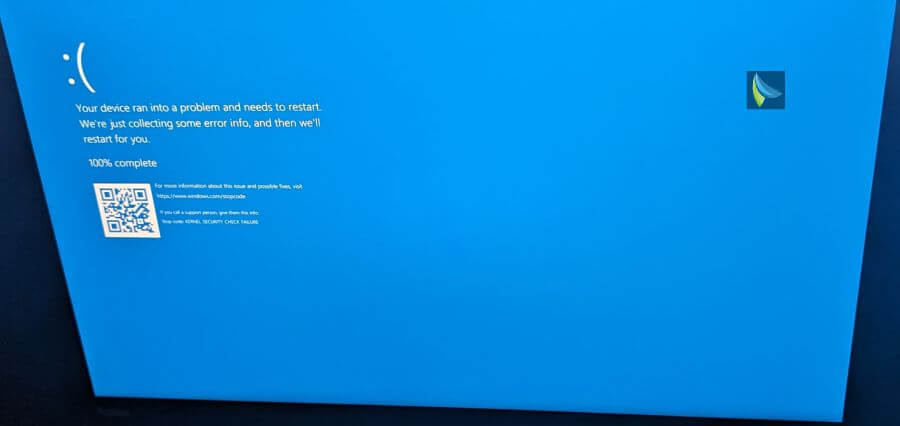You can also listen to this podcast on iono.fm here.
ADVERTISEMENT
CONTINUE READING BELOW
Download the free LiSTN audio app on Google Play, Apple or here.
JIMMY MOYAHA: A gentleman whose insights I thoroughly enjoy reading, and whose reports I have been keeping an eye on for quite some time, is a gentleman by the name of Andrew Amoils. He is the head of research at New World Wealth and joins me on the line to discuss the latest Brics report that’s been put out by New World Wealth in collaboration with Henley & Partners. This is just the latest in a string of really insightful reports that come out of Andrew’s inbox or email that I would recommend everybody subscribe to, if you can.
Good evening, Andrew. Thanks for taking the time. The latest report suggests that South Africa has lost a fifth of its millionaires in the last decade. We’ll come back to that because I find that quite shocking if you look at some of the lifestyles that we see being lived in South Africa.
Let’s start with the fact that the new report suggests that there’s $45 trillion in investible wealth that sits in the Brics bloc.
ANDREW AMOILS: Yes. Great to be on your show again. Great to hear from you. Yes, absolutely. We’ve just put out the Brics Wealth Report with Henley & Partners. You can find it on the Henley & Partners website, and it’s the first report of its kind.
We looked at the Brics countries, including the new entrants. There are 10 countries in all because Argentina didn’t join. And yes, as you mentioned, $45 trillion in investible wealth. That just includes the listed company holdings, cash holdings and debt-free residential properties. That’s kind of the liquid assets.
And then we looked at the number of US dollar millionaires in investible liquid assets in each of those countries.
As you mentioned, South Africa has seen a drop over the last decade in terms of the US dollar millionaires, mainly because the rand has depreciated by about I think 45% over the past decade against the dollar.
Also the prime residential market is down about 20% in dollar terms. In South Africa it’s up about 50% in rand terms, but down in dollar terms. And then the JSE is actually down. The JSE All Share Index is down by about 5% in dollar terms over the past decade; it’s up about 70% in rand terms, but in dollar terms it’s down.
And then also there’s been outward wealth migration, so there have been some wealthy people who have left.
Effectively, those are kind of the drivers as to why there’s been a 20% drop in the number of US-dollar millionaires living in South Africa.
JIMMY MOYAHA: Andrew, despite the drop that we’re seeing in South Africa, according to the report there are still more than 549 [dollar] billionaires in the Brics bloc. How many of those billionaires would come from South Africa in terms of dollar billionaires? Off the top of my head I can only think of fewer than five. Are the majority of them coming from places like Saudi Arabia – I’m guessing – or the UAE?
ANDREW AMOILS: Yes. There are I think 549 US dollar billionaires in the Brics, and I think 305 of them are from China. So most of them are from China and about 120 from India. Saudi Arabia has I think 22. The UAE has 20.
Russia has quite a lot of billionaires, actually – I think about 50 or 60. South Africa, as you mentioned, has the five.
It depends. Sometimes you see lists of South African billionaires that [mention] more than five, but that often is dependent. Some of the lists include private company holdings so [the compilers] look at people who have big private companies and then they’ll try to value those private companies. But we don’t do that. We just look at listed-company holdings. So our numbers tend to be a bit lower.
But also remember in South Africa there are a lot of very wealthy South African-born billionaires who don’t live here anymore. We’re looking only at the ones that live here. So if you look at the billionaires that actually live in South Africa, US dollar billionaires, there are only five.
JIMMY MOYAHA: [Chuckling] I’m shocked that you said 305 of the 549 billionaires are from China. I can’t say ‘shocked’; I suppose it is a stat that does make a lot of sense there.
Andrew, the report also suggests that there’ll be an 85% increase over the next 10 years in terms of millionaires within the Brics bloc. What are the forecasts in the report that seem interesting?
ANDREW AMOILS: Yes. We’re expecting about an 85% increase in the number of high net worths [high-net-worth individuals] in the Brics bloc.
So [among] the big rises will be Saudi Arabia; we’ve very strong progression projections there. Also the UAE – around 100%. China we’re not expecting to grow as rapidly as it did over the last decade, with us expecting growth of about 80% in the number of high net worths.
In South Africa we are expecting pretty good growth of 60%.
And there are some countries where our growth projections are pretty low, like Iran and Russia, because they’ve got a lot of sanctions to deal with, although it is obviously difficult to know exactly how things will pan out. But our projections there are around 20%. So that equates to about 85% overall, and that’s better than the global growth rate over the same period, which is expected to be about 50%.
JIMMY MOYAHA: Andrew, which are the wealthiest cities according to the report? I know there are some cities that haven’t yet made the report, but they’re also considered emerging cities that we expect to see in future reports.
ANDREW AMOILS: Yes. The wealthiest cities – we did a list in the Brics Wealth Report of the 10 wealthiest cities in the Brics, based on the number of US dollar millionaires.
ADVERTISEMENT
CONTINUE READING BELOW
And then we also have the number of centi-millionaires, which is an interesting wealth band – over $100 million US, and then obviously the billionaires.
At the top of the list is Beijing, then Shanghai, then Dubai, then Mumbai, then Shenzhen, then Hangzho, then Delhi, then Moscow, then Quanzhou, and then Abu Dhabi. Five of those cities are in China, so there are no South African cities in the top 10.
But we are expecting good, strong growth from the Cape. Going forward, we’re expecting it to be one of the biggest rises.
There are currently just over seven high net worths in Cape Town, and we’re expecting that to grow to about 15 000 over the next decade, which will make it one of the fastest rises.
But it still won’t get into that top 10 list because the bottom one on the top 10 list is Abu Dhabi and they already have 23 000 high net worths.
So there are some pretty big cities and there are obviously the Brazilian cities like São Paulo and Rio de Janeiro – they didn’t make the top 10 either. So there are a lot of big cities that didn’t make the top 10.
JIMMY MOYAHA: I wonder how different this report would’ve looked if we hadn’t admitted certain members or newer members into the Brics bloc. But with the admission of new members and the spread of the members across various geographical areas, Andrew, does the report look at mobility in terms of whether or not we’re expecting to see an expansion of things like visas or a relaxation of visas, and increased mobility among these wealthy individuals within the bloc?
ANDREW AMOILS: Yes. The report looks a lot at passport power and has the Henley Passport Index for the Brics countries. I can’t speak to that much though, because I just write about the wealth. It’s mainly Henley & Partners that handles stuff around passports.
But you’re right in saying that that’s a big factor, and that’s also a big driver of wealth in terms of mobility. One of the interesting things I should mention is that although South Africa has a lot fewer high net worths than in China – for instance, South Africa has about 37 000 high net worths compared to somewhere like India, where you’ve got over 300 000, about eight times as many – we always have to remember India has about I think 30 times as many people as South Africa.
So if you look at it that way, South Africa’s doing quite well because, although India has 30 times as many people, it has only eight times as many US dollar millionaires.
And China has 30 times as many people as South Africa, the overall population, but it has only about 25 times as many millionaires.
So South Africa actually in the millionaire category is kind of punching above its weight because it has a lower overall population.
JIMMY MOYAHA: Andrew, you mentioned something about centi-millionaires being anyone with over a $100 million US dollars in terms of wealth. From that perspective are we seeing certain groups more prevalent, whether it’s the millionaires, the centi-millionaires, the billionaires? Are we seeing that one group is growing at a faster rate than others, perhaps?
ANDREW AMOILS: The centi-millionaire band has been pretty resilient in South Africa. So for instance, if you look over the last decade, the number of high net worths in the $1 million band has dropped by around 20%. But the centi-millionaire band has dropped by about only 7/8%, so it hasn’t gone down by much.
It’s been a lot more resilient, the $100 million dollar-plus band, which is around R2 billion. So those are very wealthy people.
South Africa has a lot of centi-millionaires. Currently, as of December last year, a month ago, SA had 102 centi-millionaires, which is quite a lot.
Saudi Arabia has 195, so South Africa’s not far behind Saudi Arabia in terms of the centis. South Africa has quite a lot of centis.
It’s just the billionaire category that’s quite low in South Africa – compared to a lot of the other Brics [members] – with, as we mentioned, only those five billionaires. But there are a lot of centis and there are quite a lot of high net worths.
JIMMY MOYAHA: Well, we’ll leave it at that, Andrew. Quite insightful to say the very least. There are 102 centi-millionaires in South Africa, millionaires who would be worth more than $100 million or more.
We will dig into this at another time when the following report comes out, to see if these numbers continue to grow.
That was Andrew Amoils, who is the head of research at New World Wealth on the latest inaugural Brics Wealth Report that was published today.
#lost #dollar #millionaires #decade






